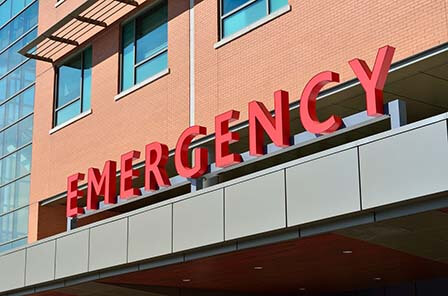 All gas-related workplace incidents can be easily prevented if you take proper safety measures. The same is true for hospitals as well where you have a variety of gas cylinders stored in dedicated storage rooms. Although the hospital staff that handles the storage of these cylinders has suitable training, there are some ideas that can make the storage and handling of the cylinders safer, efficient, and more effective.
All gas-related workplace incidents can be easily prevented if you take proper safety measures. The same is true for hospitals as well where you have a variety of gas cylinders stored in dedicated storage rooms. Although the hospital staff that handles the storage of these cylinders has suitable training, there are some ideas that can make the storage and handling of the cylinders safer, efficient, and more effective.
Medical gas cylinders are heavy, large, and relatively unstable because of their small base-diameter to height ratio. For maximizing safety and storage efficiency, you should adhere to the following tips:
1. Set Cylinders Apart by Labeling and Proper Organizing
Clearly labeling and properly organizing medical gas cylinders will eliminate mistakes when staff members of the hospital are in a hurry. Set cylinders apart via proper labeling and organizing, it will help the staff easily identify empty, partial, and full cylinders and eliminate any room for mistakes that could result in serious harm.
2. Separate Empty Cylinders from Full Cylinders
The difference between a full cylinder and an empty cylinder is whether or not it has been open. The cylinder is considered empty once its valve has been opened; regardless of the amount of contents it has remaining. For efficient storage, it is recommended that you physically separate empty cylinders (opened) from full cylinders (unopened).
3. Minimize Fire Risk
If you want to minimize a potential fire risk, then it is highly recommended that you limit the number of medical gas cylinders in the storage area of the hospital. An oxygen enriched environment can be created by a full (unopened) cylinder with a malfunctioning valve. Nitrous oxide or oxygen should never be stored in the same room with combustible gases unless there is at least 20 feet distance between them or there is a one-hour rated fire resistant partition. According to NFPA guidelines, you should limit the number to 12 cylinders (300 cubic feet) of nonflammable medical gas.
4. Store Cylinders in Compatible Groups
Storing cylinders in compatible groups is very important as it helps prevent various hazards. If the cylinders are stored in an outside area of the hospital, then there must be a minimum distance of 20 feet from combustible material and flammable gases. Keep oxygen cylinders at least 20 feet away from flammable gas cylinders. If for some reason you cannot do this, then use a non-combustible barrier for separation. The barrier must be at least 5 feet high and have at least a one hour fire rating. The same goes for keeping corrosives away from oxidizers or flammables. This does not apply when the gas cylinders are stored indoors in gas cabinets.
5. Take Advantage of Cylinder Racks
To make sure that the medical gas cylinders are stored safely and prevent them from tipping or falling over, you should take advantage of cylinder stalls and racks. A wide range of sturdy and quality gas cylinder racks are available on the market. Buying them and keeping the cylinders within them will drastically reduce the risk of them falling over and causing injury.
JT Racking Systems is dedicated to supplying our customers with the highest quality Cylinder Storage Racks available. Our Cylinder Storage Racks are fully made in America with US Steel and Chain, and are Welded and Powder Coated at our facility in Southern California. Regularly used in hospitals, universities, or laboratory gas storage rooms, our cylinder racks can be utilized wherever securing of cylinders is needed. We ship anywhere in the United States from our Los Angeles area facility, at the best prices on the market since you are buying direct from the manufacturer.
